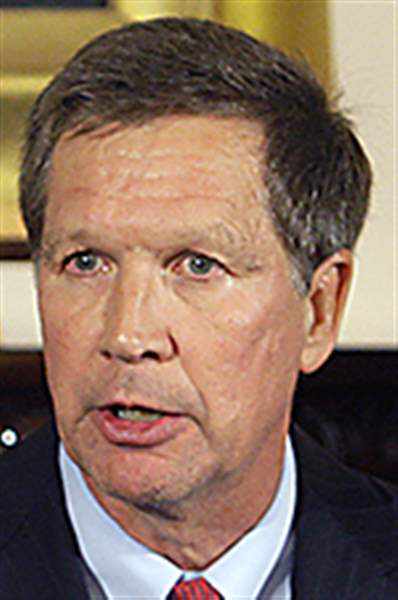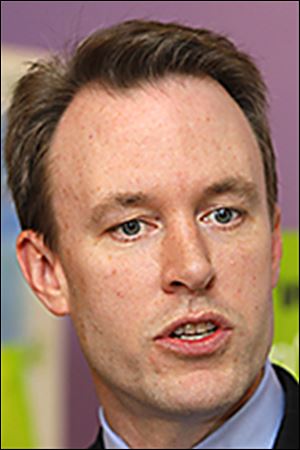
STATE ECONOMY
Ohio’s jobless rate rises beyond national average
11/23/2013
Kasich
ASSOCIATED PRESS

Kasich
COLUMBUS — Is the “Ohio miracle” over?

FitzGerald
For the first time in three years, Ohio’s unemployment rate has eclipsed that of the nation as a whole.
Numbers released Friday showed that Ohio’s jobless rate inched up to 7.4 percent in September, a number delayed because of the early October federal government shutdown, and then to 7.5 percent in October.
Ohio is now two-tenths of a point above the 7.3 percent national average reported in October, which itself climbed slightly. A year ago, Ohio’s seasonally adjusted unemployment rate was 6.9 percent, a full percentage point below the national average.
The point at which the two lines on the graph crossed is a symbolic benchmark, coming just as the 2014 election cycle is starting to pick up steam and Republican Gov. John Kasich is asking voters for a second term.
The last time Ohio’s unemployment rate was higher than the national average was October, 2010, before Mr. Kasich took office, according to U.S. Department of Labor statistics. The number of unemployed in the state was 427,000 in October, up 31,000 over the last year.
“The whole country has experienced some economic difficulty, but Governor Kasich’s position was that, just as he claimed Governor [Ted] Strickland had dragged down the state more than the national average, he was going to lift it more than the national average,” said Mr. Kasich’s expected Democratic opponent, Cuyahoga County Executive Ed FitzGerald. “He was happy to make that argument when unemployment was less than the national average. Now that it’s higher, I don't know how he explains that.”
Mr. Kasich has repeatedly touted Ohio’s better numbers, calling what was happening here “Ohio’s comeback,” and “Ohio’s miracle,” while also warning about “headwinds” from Washington. Ohio’s past performance had allowed the Republican governor to tout job-creation figures at every opportunity and to talk about it in national interviews that have helped to fuel speculation about a 2016 presidential run.
The unemployment figure is just one statistic against which the state’s economic health can be measured. Mr. Kasich has pointed to the roughly 160,000 private-sector jobs created since he took office and the full restoration of the state’s rainy-day reserves as indications of the state’s overall economic health.
“Today’s jobs report shows more Ohioans working a job in the private sector than at any time since November, 2008,” Kasich spokesman Rob Nichols said.
“While Ohio’s job situation continues to show a strong upward trend, we must keep fighting for Ohio workers and their families by relentlessly pursuing a stronger environment for job creation.”
A poll released Friday by Pennsylvania-based Mercyhurst Center for Applied Politics, reflecting the views of 437 Ohio registered voters, found Mr. Kasich has a 50 percent approval rating. Thirty-five percent said they disapprove of his performance.
By comparison, President Obama had an approval rate of just 33 percent among those Ohioans.
The perception that Ohio is in better shape than the nation as a whole continues.
Those polled had a better opinion of Ohio’s economy compared to the national economy. While 35 percent of Ohioans questioned rated Ohio’s economy “good” or “excellent,” just 19 percent said the same of the national economy.
The poll had a margin of error of plus or minus 5 percentage points.
Federal workers who were temporarily furloughed during the government shutdown were considered unemployed and contributed to the climb in the state’s October number.
“There was a decrease in total government employment, but the decrease in federal government employment was not the driving factor,” said Ben Johnson, spokesman for the Ohio Department of Job and Family Services.
“In October, there were 600 fewer federal workers in Ohio, but there combined [were] close to 6,000 fewer state and local government jobs.”
A separate survey of businesses showed job creation continued at a slow pace during both months.
In September, 2,400 nonfarm wage and salaried jobs were added, but the growth slowed to an anemic 200 in October.
Contact Jim Provance at: jprovance@theblade.com or 614-221-0496.